I had just opened my eyes to Nature, having been introduced to birdwatching. I quickly took to this new activity and forayed often and regularly to the surrounding wilderness areas. This also got me to see other denizens around me. One such was a lizard. As I went along, I learnt its name – the Common Garden Lizard.
This lizard was common even around my residence (read my then residence). These lizards became rarer as each year went by. However, this story is not about how these lizards have become rare in the urban setting. So let us keep this point at the back of our minds for now.
What caught my attention was the behaviour of some urchins who would aim at these lizards sunning themselves on stone fence posts with their catapult. They would often miss the target and the lizard would escape. Needless to say, they hit bull’s eye at times and they would parade the dead lizard. And every time I saw these boys, catapult in hand, I would promptly chase them away.
As time went by, typically during summer, I saw some of these lizards with a black throat, donning a bright crimson / red cloak covering the head and shoulders. Lizards in this state would often find prominent elements in their environment to sit on. They would brighten the colours of their cloak, sit with their body raised well above the surface, bob their head from time to time and inflate their throat. The display is very impressive to watch. Whenever I approached a displaying male, it would quickly lose colour and lie flat to try and escape being noticed.
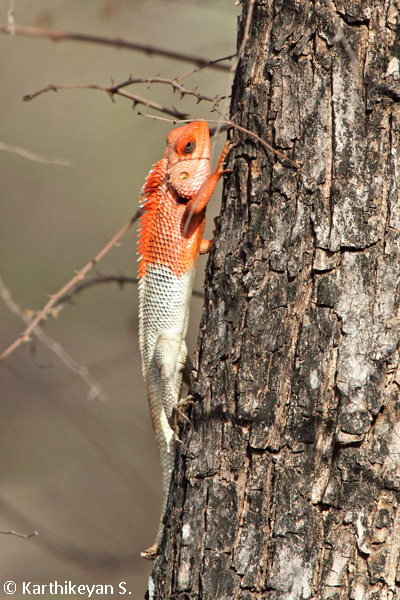
That said, the display itself has earned them a dubious name – bloodsucker. The lizard, however, thrives on a diet of insects largely.
Much later, when the fascination for watching them had subsided, curiosity about why such a behaviour, kicked in. That is when I learnt that only the male lizards go the length to don such colours to impress the females of their kind. They also use the same along with some behaviours mentioned above to warn other males in the vicinity and perhaps also to stake out a territory.
Several species of lizards indulge in this kind of behaviour. These include the Forest Calotes Monilesaurus rouxii often encountered in wooded areas. Other species like Calotes calotes and Calotes grandisquamis are predominantly green during the non-breeding season. The males assume some spectacular colours during the breeding season.
Males of the Peninsular Rock Agama Psammophilus dorsalis that are particularly common around Bangalore go completely black with a mask and cape of bright yellow to deep orange. This lizard too exhibits similar behaviour of head bobbing and doing push-ups on rocks where is most often found.
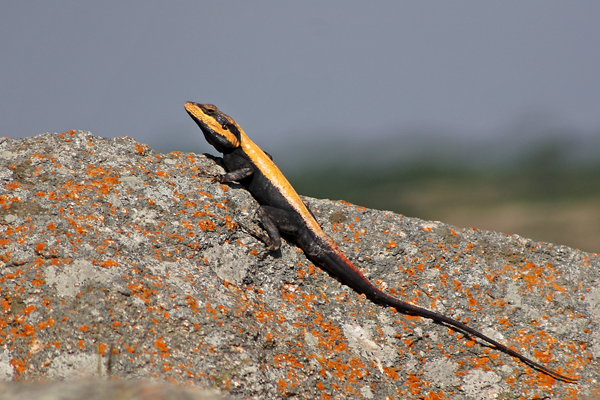
In the forests, we find another very interesting lizard – the Flying Lizard also known as the Draco Draco dussumieri. It is very beautifully camouflaged on the tree trunk.
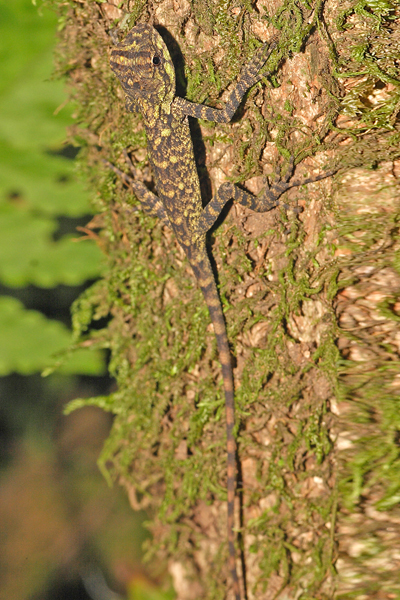
Watch it for a period of time and you will see it flick it gular sac which is a bright yellow. Many a times that is the only way you spot one of these lizards. Males of this species too use the bright colours to display to potential mates in the vicinity and to warn possible competitors.
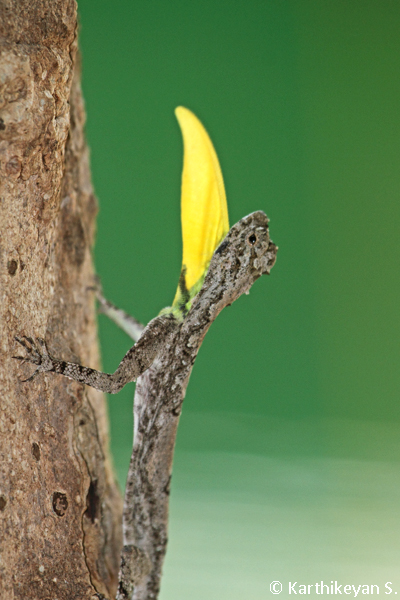
While in dry areas, you will find another equally beautiful lizard – the Fan-throated Lizard Sitana sp. This lizard is quite unassuming during the non-breeding season and the pattern on its body helps it blend very well into its surroundings.
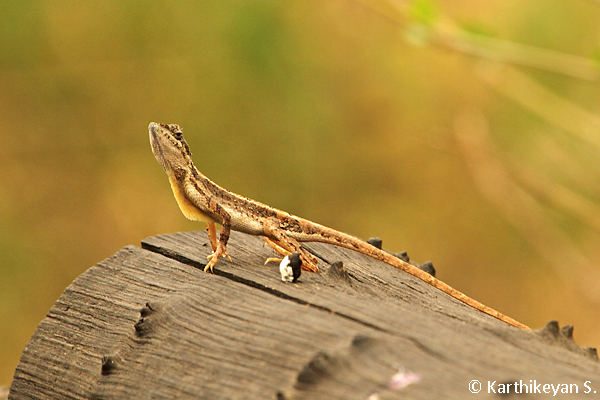
However, the males can put forth an impressive display as can be seen in the picture below.
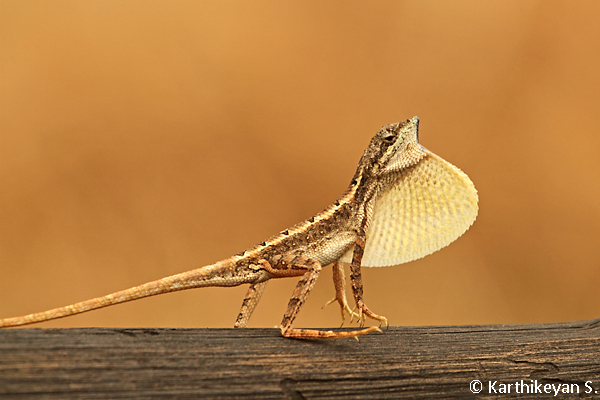
I have enjoyed watching these lizards and the show they put on from time to time. But it also brought up a question in my head. Why would a male put in so much effort and risk its life – donning bright colours and standing out in its environment making itself vulnerable to predators?
Some reading and talking to the better informed helped me understand that it is well worth for the male to be flamboyant and put himself at risk to impress females and get her favours. In all these situations, the dull-coloured female is likely to choose the most conspicuous of them all. For, she thinks that a male who has survived all the odds is likely to carry better genes! This would prompt her to accept and mate with such a male. This would then ensure that the male is able to pass on his genes to the next generation!
So, go out, find a displaying male lizard, enjoy watching all the nuances of his behaviour. Don’t forget that he has perfected his act over millions of years of evolution and that the females have helped him become better at it!